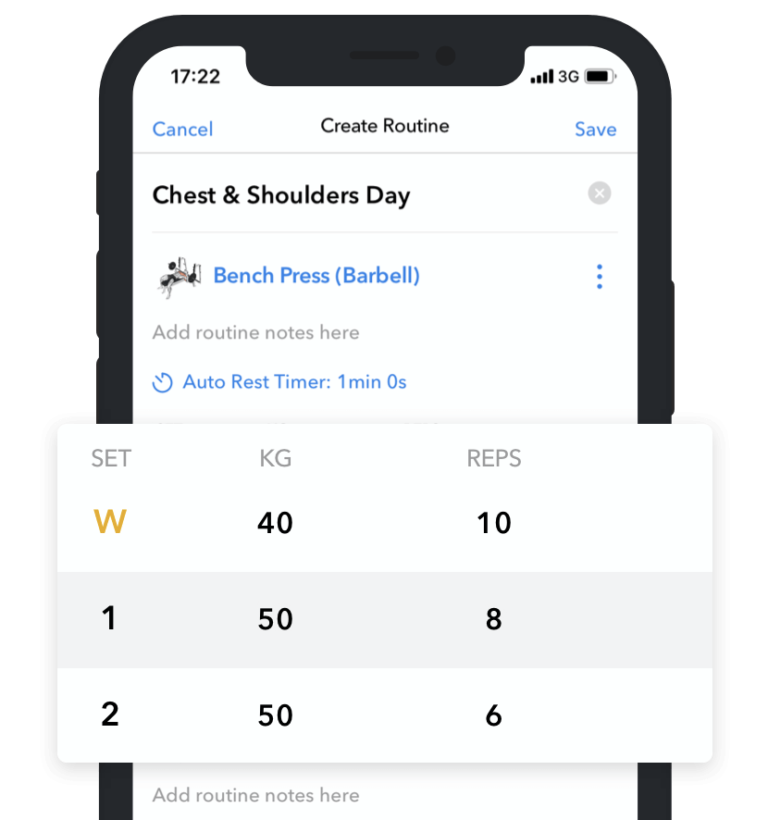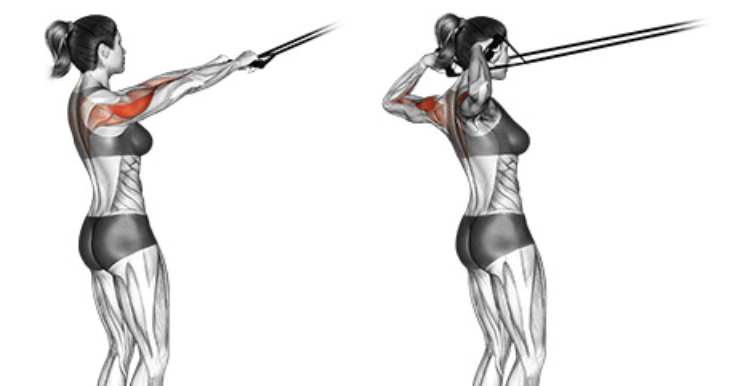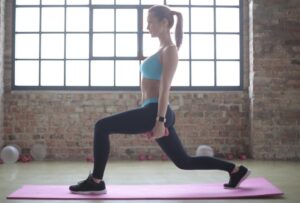As their name suggests, back cable exercises are activities you perform using a cable machine to strengthen and develop your back.
Instead of doing bodyweight activities or using free weights for resistance, you get the necessary muscle stimulus by using a cable system typically attached to a weight stack.
Since the back includes numerous large and small muscles, it’s best to do several movements and target the area from different angles.
Notable advantages of doing cable exercises include the following:
- These are generally more beginner-friendly and easier to master than free-weight and bodyweight activities
- You can adjust the resistance to fit your needs by using more or less weight from the stack
- There are plenty of effective exercises you can perform to emphasize specific areas of your back, using heavier and lighter loads
- Cables provide consistent tension, which can improve muscle activation, resulting in better growth in the long run
Back cable exercises are fantastic for everyone looking to improve muscle activation, develop their back, and build strength. You can base your entire training program around cable exercises or use them as an addition to an already existing back program.

Hevy – Workout Tracker









Hevy – Workout Tracker
Create and log your pr workout with Hevy and track your progress
Types of Back Cable Exercises
1. Seated Cable Row
Seated cable rows are one of the best cable back exercises you can include in your training.
The exercise is relatively easy to master and provides numerous benefits for trainees. Most notably, it offers decent overload and has a good range of motion, allowing you to train your back and biceps effectively (1).
How to:
- Select the appropriate weight on the cable machine.
- Sit down and grab the cable attachment. You can use a straight bar or a V handle.
- Place your feet on the platform and sit back while maintaining a slight knee bend.
- Straighten your upper body and retract your shoulder blades.
- With your core engaged, take a deep breath and pull the bar to your mid-stomach.
- Pause briefly, squeezing your back muscles.
- Slowly extend your arms while keeping your shoulder blades retracted and your torso in position. Exhale.
Pro tip:
Performing rows on a cable machine allows you to train the back muscles through the necessary range of motion and with the appropriate load.
Take full advantage of the exercise by selecting the appropriate resistance. Doing so would allow you to maintain constant tension on your upper back, cause a more potent stimulus, and potentially grow better.
In contrast, using too much weight could cause you to overcompensate by using momentum, making each repetition less effective.
2. Lat Pulldown (Cable)
Lat pulldowns are among the best cable exercises you can perform to emphasize the latissimus dorsi muscle (lats) (2). Performing the exercise correctly leads to a broader back and more strength for bodyweight activities, such as pull-ups.
How to:
- Select the appropriate load and set the thigh pad at a height where your legs fit snugly.
- Grab the straight bar with an overhand grip (palms facing forward). Your hands should be shoulder-width apart or slightly wider. Experiment to see what works best.
- With your arms extended overhead, sit down and secure your legs underneath the thigh pad.
- Retract your shoulder blades and lean your torso slightly back.
- Take a deep breath, engage your abs, and pull the bar to your upper chest, squeezing your upper back muscles. Keep your elbows in line with your torso.
- Slowly extend your arms as you exhale.
Pro tip:
One common mistake trainees make during a lat pulldown is using too much weight, which causes them to shorten the range of motion and move their upper body forward and back too much.
Doing so robs your upper back muscles of tension and makes it more challenging to engage your lats. Avoid the error by starting with less weight, training through a full range of motion, and focusing on proper muscle activation.
Experiment with different grip options to see what works best. For example, you can do the close-grip lat pulldown or use a neutral grip (hands facing one another) if your gym has the necessary cable attachment.
3. Split-Stance Low Cable Row
Split-stance cable rows are not as popular as other back exercises but can be a fantastic addition to back workouts with cables.
A fantastic advantage of the low cable row is that it trains one side at a time, leading to more balanced back development and possibly better symmetry.
How to:
- Select the appropriate load on the cable machine, set the pulley to the lowest position, and attach a handle.
- Grab the handle, take a couple of steps back to lift the weight off its stack, and stagger your stance for more support.
- Place your free hand on your hip, retract your shoulder blades, and take a deep breath.
- Pull the handle in one fluid motion, bringing your elbow next to your torso. Squeeze your lat and hold the position for a moment.
- Slowly extend your arm as you exhale. Keep your shoulder blade retracted.
- Take another breath and repeat.
- Once finished, grab the handle with your other hand and do the same number of reps.
Pro tips:
- Despite using less weight, the one-arm cable row is challenging and requires excellent stability. The movement provides a decent indirect core training stimulus, which is why you must brace your entire upper body at the start of each set.
- The cable twisting standing row can be helpful if you struggle to activate your lats. One difference is that you allow your shoulder to protract as you extend your arm and follow up by twisting your torso in the direction of each pull.
For example, when rowing with your right side, allow your shoulder to protract as your arm extends, then twist to your right as you pull.









Hevy – Workout Tracker









Hevy – Workout Tracker
Create and log your pr workout with Hevy and track your progress
4. Face Pull
Face pulls are a fantastic exercise for the upper back. Unlike most rowing exercises, where you pull the weight to your chest or stomach, the objective here is to flare your elbows and pull the rope attachment or resistance band to your face.
Doing so emphasizes the rear delts and strengthens the rotator cuff muscles.


How to:
- Select the appropriate weight, set the pulley to the highest position, and attach a rope.
- Grab both sides of the rope attachment with a neutral grip (palms facing one another).
- Assume the starting position by taking a couple of steps back, fully extending your arms in front of your body, and retracting your shoulder blades. Position your feet shoulder-width apart or stagger your stance if that helps you stay in position.
- Take a deep breath, engage your midsection, and pull the rope toward your face.
- Flare your elbows to your sides and spread the rope, bringing your hands to the sides of your head.
- Pause briefly and slowly extend your arms as you exhale.
Pro tip:
You can improve rear delt and trapezius activation by introducing slight shoulder elevation at the top of each repetition. Pull the rope to your face, spread it, and raise your arms several inches before preparing for the next rep.
5. Single-Arm Cable Row
The single-arm row is one of the best cable pulls for back growth (1). Like the spit-stance low cable row, training one side at a time results in more even development and a lower risk of side-to-side muscle imbalances.
Plus, training one side at a time allows for a slightly longer range of motion thanks to the ability to rotate your torso several degrees. Such a minor tweak in technique can result in better muscle activation and oblique development (the muscles on both sides of the six-pack abs) (1).
How to:
- Set the cable pulley at chest level, attach a handle, and select the appropriate load.
- Grab the handle and take a couple of steps back to lift the weight off its stack.
- Assume the starting position by positioning your feet shoulder-width apart, bending your knees slightly, engaging your abs, and bracing your upper back.
- Take a deep breath and pull the handle to your torso. Your elbow should end up at your side.
- Squeeze your upper back briefly and slowly extend your arm as you exhale.
- Inhale again and repeat.
- Once finished, grab the handle with your other hand and do the same number of reps.
Pro tip:
Limit the degree of elbow flexion by bringing the handle to your lower stomach/hip bone. Doing so would limit how much your arm bends, leading to less bicep activation.
Ideally, you would feel a deep burn in your lats at the end of each set with minimal fatigue in your upper arms.
6. Cable Pull Through
Cable pull-throughs are not among the traditional back exercises on a cable machine.
Unlike pulling exercises that primarily work the lats, rhomboids, and other upper back muscles, pull-throughs are more similar to a deadlift. The activity trains numerous areas, including the entire posterior chain: calves, hamstrings, glutes, and back.
How to:
- Select the appropriate load, set the pulley to the lowest position, and attach a rope.
- Face away from the cable pulley and have the rope between your feet.
- Bend over, grab the rope with both hands and take a couple of steps forward to lift the weight off its stack. Have your knees slightly bent and feet slightly more than shoulder-width apart.
- With your hands together and the rope between your legs, lean your torso forward by hinging at the hips.
- Lower your torso until it is almost parallel to the floor, and keep your spine in a healthy, neutral position. You should feel the tension in your posterior chain muscles.
- Pause briefly and drive your hips forward, squeezing your glutes at the top. Exhale.
Pro tip:
Pull-throughs emphasize the lower body more than the upper back, but they are still fantastic for building the erector spinae, lats, rhomboids, and trapezius.
Leaning your torso to a smaller degree limits hamstring involvement and allows you to keep more tension through the back.
7. Chest-Supported Cable Row
Chest-supported rows are among the less common cable lat exercises. People don’t generally do the movement because they don’t know it exists, and the setup is slightly more complex.
Still, similar to chest-supported rows with free weights, extra torso support can improve muscle activation and reduce the risk of using momentum.
How to:
- Position an adjustable gym bench a couple of feet from the cable pulley. The gym bench should be facing away from the cable machine.
- Set the bench at an incline of 60 to 70 degrees (almost upright).
- Select the appropriate load, set the pulley in the lowest position, and attach a pair of long D handles. Alternatively, use a long rope attachment.
- Grab the D handles, walk over to the bench, and position yourself against the almost upright back support. You can have your knees on the seat or dig your toes into the floor––whichever feels more comfortable. Your chest should be against the top of the bench or slightly higher.
- Retract your shoulder blades, take a deep breath, and engage your midsection.
- Pull toward your mid-stomach, spreading the handles and bringing your elbows to your sides.
- Squeeze briefly and slowly extend your arms without allowing your shoulder blades to protract. Exhale.
Pro tip:
Chest-supported rows are an ideal cable machine exercise for high-rep sets. Doing 15+ slow and controlled reps is a fantastic way to train your back muscles and produce high metabolic stress levels––an essential factor in building muscle (3).
8. Straight Arm Lat Pulldown (Cable)
The straight arm pulldown is a fantastic addition to back workouts with cables.
Unlike most other exercises on our list, the objective here is to keep your arms straight throughout each set. The lack of elbow flexion and extension means there is almost no bicep activation, allowing you to target the back muscles better.
How to:
- Select the appropriate load, set the cable pulley to the highest position, and attach a rope, straight bar, or a pair of handles––whichever you prefer.
- Grab the cable attachment with both hands and rotate your hands out, having your palms facing forward.
- Take a couple of steps back to unrack the weight off its stack.
- Position your feet shoulder-width apart, bend your knees slightly, and lean your torso forward.
- Maintain a slight bend in your elbows, take a deep breath, and tense your midsection.
- Pull the cable down to your hips/upper thighs in one fluid motion without bending your elbows or changing your torso angle.
- Squeeze your lats and slowly release the cable to the starting position as you exhale.
Pro tip:
Experiment with the exact torso angle to see what feels best for lat activation. Leaning forward more will generally allow you to stretch your lats more, but ensure a neutral spine throughout each set to prevent aches.
9. Shrug (Cable)
The cable shrug can be another great addition to cable workouts for back growth. Shrugs train the back through shoulder elevation, primarily targeting the trapezius––a large muscle that makes up a large percentage of the upper back (4).
How to:
- Set the pulley to the lowest position, attach a straight bar, and select the appropriate load.
- Bend over, grab the bar with an overhand grip (palms facing back), and stand tall.
- Take a step back if necessary to lift the weight off its stack.
- With your arms straight and to your sides, retract your shoulder blades, take a deep breath, and engage your abs.
- Slowly shrug your shoulders in one fluid motion. Imagine that you’re trying to touch your ears with your deltoid muscles. Doing so can help you train through a longer range of motion and engage the trapezius muscle better.
- Pause at the top for a moment and slowly lower your shoulder blades as you exhale.
Pro tip:
You can perform the single-arm version if there isn’t enough weight on the cable machine. All you have to do is attach a handle and hold it with one hand.
In addition to providing an adequate muscle stimulus, doing so can improve muscle activation and promote more balanced development (4).









Hevy – Workout Tracker









Hevy – Workout Tracker
Create and log your pr workout with Hevy and track your progress
10. Cable Reverse Fly
Cable reverse flyes are not a traditional back exercise. The movement doesn’t train the lats or rhomboids but primarily targets and isolates the rear deltoids (5).
Still, including the exercise as part of upper back workouts is a great way to target the area more thoroughly and promote shoulder health.
How to:
- Set the pulleys of a double cable machine at the highest position and select the appropriate load on both.
- Stand in the middle of the machine with your sides facing the two pulleys.
- Walk to your right and grab the pulley with your left hand.
- Walk to your left and grab the pulley with your right hand.
- Return to the middle of the cable machine with your arms slightly bent and in front of your body. Your hands should be together with your palms neutral or facing down.
- Assume a comfortable stance, retract your shoulders, take a deep breath, and engage your abs.
- Pull both cables back and down, crossing them to form the letter X. Maintain a slight bend in your elbows. Your arms should be at your sides.
- Squeeze your upper back muscles and slowly bring your arms together as you exhale.
Pro tip:
The rear deltoids are small and cannot produce as much force. Using too much weight would cause secondary muscles to take over, turning the exercise into an ego lift.
Use as little weight as possible and do up to 15-20 slow, controlled reps on every set.
How to Perform Back Cable Exercises
1. Proper Technique
The first requirement for machine workouts for back growth is proper form. Even the best exercises won’t target the correct muscle group if you solely focus on moving the weight from point A to B.
Slow down, focus on the mind-muscle connection, and always use a weight you can control.
2. Safety Tips
Here are some tips for safer cable back workouts:
- Always warm up well before working out: light cardio (up to 5 minutes), dynamic stretching (arm circles, leg swings, etc.), and warm-up sets (gradually increasing the resistance until you get to your working weight) (6)
- Train with proper form: do repetitions slowly, avoid using jerking motions, focus on feeling the correct muscles, and monitor for aches that could occur during or after your training
- Train with the correct load: begin with lighter loads you can handle comfortably and gradually increase the resistance until you reach a point where you can do at least 10 to 12 smooth and controlled reps on most exercises
3. Increasing Resistance
Progressive overload means gradually subjecting yourself to more challenging workouts to continue progressing. Doing the same training repeatedly might deliver some results, but it will stop being effective within a few weeks.
One straightforward way to apply overload is to use more weight. For instance, if you’re using 100 lbs on lat pulldowns now, you should ideally use 110, 120, or even 130 lbs months down the road.
Of course, using more weight means nothing if your technique breaks down or you do significantly fewer reps on each set. Ideally, your form will stay the same, and you will be able to do roughly the same number of reps as you gradually add more weight.
4. Targeting Specific Muscles
Back training is complex because there are numerous primary and secondary muscles to target.
One of the best ways to ensure more even development is by including a variety of back exercises that target the area from different angles. For instance, you can combine lat pulldowns with the seated cable row, cable shrug, and straight arm pulldowns.
3 Cable Machine Back Workouts (Beginner, Intermediate, and Advanced)
Beginner Cable Back Workout
| Type | Exercise | Sets | Reps | Rest Period |
| Set | Lat Pulldown (Cable) | 3 | 10-12 | 1.5-2 mins |
| Set | Seated Cable Row | 3 | 12-15 | 1.5-2 mins |
| Set | Straight Arm Lat Pulldown (Cable) | 3 | 12-15 | 1.5-2 mins |
| Set | Face Pull | 2 | 15-20 | 1-1.5 mins |
The above is a straightforward beginner back workout for muscle mass and strength. It doesn’t include many exercises or sets simply because beginners don’t need that great of a stimulus to make good progress.
Each of these exercises trains the primary and secondary muscles of the back in a unique way, leading to balanced development.
For instance, lat pulldowns are a vertical pulling exercise, whereas seated cable rows are a horizontal one. As such, these two emphasize different upper back muscles.
Face pulls are not your traditional back exercise because they emphasize the rear delts and strengthen the rotator cuff muscles. Still, we recommend including the movement in your back workouts because it promotes shoulder stability and health.
Good back workouts for women shouldn’t be much different. In fact, cable machines are less intimidating than free-weight movements, making it easier for women to get started with gym training without feeling overwhelmed.
Related article: Upper Body Workout for Beginners and 12 Essential Exercises
Intermediate Cable Back Workout
| Type | Exercise | Sets | Reps | Rest Period |
| Set | Lat Pulldown (Cable) | 3 | 10-12 | 1.5-2 mins |
| Set | Single-Arm Cable Row | 3 | 12-15 | 1.5-2 mins |
| Set | Chest-Supported Cable Row | 3 | 12-15 | 1-2 mins |
| Set | Shrugs (Cable) | 3 | 12-15 | 1-2 mins |
| Set | Face Pull | 3 | 15-20 | 1-1.5 mins |
As you can see, an intermediate-level back workout isn’t that different from one designed for a complete beginner. The same rules apply, and the objective is still to target the back muscles from various angles, causing more balanced development.
The most notable difference is that there are slightly more exercises. Most notably, the workout includes shrugs, which primarily train the trapezius––a muscle that makes up a large percentage of the upper back.
Aside from that, exercise selection isn’t that different simply because the same activities can promote growth, so long as trainees focus on proper form, train through a full range of motion, apply progressive overload, and get plenty of recovery time.
Another difference is that the intermediate back workout includes a few extra sets. Doing so becomes necessary as you become more advanced. Research suggests that training volume is tightly correlated with progression, which means you must do increasingly more work to keep moving forward (7).
Of course, training volume is highly individual, and more doesn’t always mean better. Strive to do less volume while making progress, and only add extra sets if you’re recovering well without seeing improvements.
Check out Hevy if you’re looking for a simple app to organize your workouts, log each session, and track your progress from week to week.
Advanced Cable Back Workout
| Type | Exercise | Sets | Reps | Rest Period |
| Set | Lat Pulldown (Cable) | 4-5 | 10-15 | 1.5-2 mins |
| Set | Split-Stance Low Cable Row | 4-5 | 10-15 | 1.5-2 mins |
Superset | Cable Pull Through | 4 | 10-12 | 1.5-2 mins |
| Shrug (Cable) | 4 | 10-12 | ||
Superset | Straight Arm Lat Pulldown (Cable) | 4 | 15-20 | 1-1.5 mins |
| Face Pull | 4 | 15-20 | ||
| Finisher | Seated Cable Row | 3 | 15 | No rest |
In contrast to the previous two workouts, this advanced routine is quite different, and there is more information to unpack.
Most notably, there is a lot more training volume here. We have seven exercises and more sets. Doing more work becomes necessary for more advanced trainees, especially if they plateau and struggle to see any progress for weeks.
In addition to that, we have two supersets and a finisher. The supersets are by no means unique, and anyone can take advantage of them in their training to increase the pace and complete more work in less time.
The objective during supersets is to perform the two exercises back to back with no rest. For example, you would do a set of cable pull-throughs, immediately jump to cable shrugs and then take a break before repeating.
A finisher is a workout tactic you leverage at the end of a session. It is an advanced workout tactic designed to cause an even greater disruption and potentially lead to slightly more progress.
In our example, the finisher is a triple drop set, where you do a set, reduce the load by 10 to 30 percent, do another set, drop the weight once again, and complete a third set before calling it a day.
Related article: Barbell Back Workouts for a Strong and Muscular Back









Hevy – Workout Tracker









Hevy – Workout Tracker
Create and log your pr workout with Hevy and track your progress
Conclusion
Cable machine exercises are beginner-friendly and great for training the back in multiple ways, causing more balanced development.
The overloading potential is excellent, and there are countless effective back exercises to include in your workouts.
As you can see, there are also plenty of ways to combine exercises based on your experience level. Regardless of where you stand, there is a way to put together simple, challenging, and effective cable back workouts.
Of course, that doesn’t mean you solely have to rely on cable machines. Like other workout approaches, cable exercises are a tool that can enhance your sessions.
For instance, you can combine free-weight exercises (e.g., bent-over row) with bodyweight activities (e.g., pull-ups and inverted rows) and finish with cable movements.
Check out Hevy––the ultimate tool for organizing your training, logging your workouts, and tracking your progress.
FAQs
1. Can you build muscle with just cables?
Yes, so long as you train with proper form, feel the correct muscles activating, and gradually increase the difficulty of your training.
2. Are cables better than dumbbells?
Cables are not necessarily better than dumbbells or other training equipment. As mentioned above, cables are a tool you can add to your arsenal to enjoy more varied workouts and improve muscle activation.
3. What are the advantages of using cables over other equipment?
Cables allow you to adjust the resistance, pick from many effective exercises, and overload your muscles for a long time.
Unlike other training equipment, gravity doesn’t influence cables, which means there is constant tension and opportunities to target your muscles from new angles.




